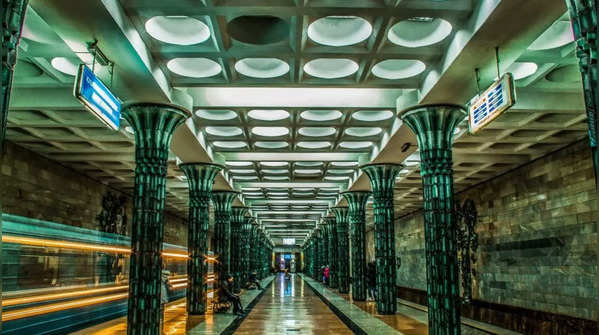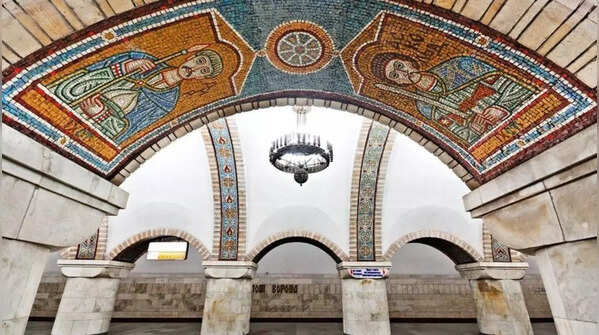- News
- World News
- Rest of World News
- Art in daily commute: 10 stunning metro stations from around the globe
Art in daily commute: 10 stunning metro stations from around the globe

Uzbekistan's Gafur Gulom station: Tashkent's ceramic art gallery
Gafur Gulom station was opened on November 6, 1977, as part of Tashkent's metro system, serving the city's residents and visitors. The station's walls and columns are adorned with Uzbek ceramic tiles, known for their geometric patterns and floral motifs that symbolize prosperity and beauty. (Photo: X/JamesLucasIT)

The gem beneath Europe's second-longest river
Szent Gellért tér station features Art Nouveau architecture, characterized by its intricate ironwork, decorative tiles, and elegant curves. The station was opened on March 24, 1973, as part of Budapest's metro system, connecting passengers to important landmarks and neighborhoods. (Photo: X/JamesLucasIT)

Ukraine's medieval masterpiece metro station
The Zoloti Vorota station was opened on December 30, 1989. The station is designed to resemble a medieval Kyivan Rus temple or fortress, reflecting the rich history of Kyiv. Mosaics depict scenes from the history of Kyivan Rus, including images of princes, warriors, and saints. (Photo: X/JamesLucasIT)

Berlin's aesthetic neo-romanesque station
Heidelberger Platz station was opened on October 12, 1913. This structure is a remarkable example of architectural beauty in the city's extensive U-Bahn network. The walls and ceilings are adorned with beautiful tile mosaics and ornamental elements that add to the station’s stunning appeal. (Photo: X/JamesLucasIT)

Moscow's station with Belarusian bas-reliefs and WWII history
Belorusskaya features Stalinist architecture, characterized by its lavish and brutalist design. It was opened in 1870 and rebuilt in its current form in 1907–1912. The walls and ceilings are adorned with beautiful bas-reliefs and sculptures that reflect Belarusian culture and folklore. During World War II, the station served as a bomb shelter for residents during air raids. (Photo: X/JamesLucasIT)

New York's historic station with Guastavino tile and brass chandeliers
The City Hall station, also known as City Hall Loop station, is a closed station on the IRT Lexington Avenue Line of the New York City Subway opened in 1904. It was designed in the Romanesque revival style by the renowned architectural firm Heins & LaFarge. (Photo: X/JamesLucasIT)

Paragon artwork depicts human life in Taiwan metro station
The "Dome of Light" was designed by Italian artist Narcissus Quagliata in Taiwan in 2008. It is made up of over 4,500 glass panels and covers an area of 660 square meters. The dome is said to tell the story of human life in four different themes: Water: The Womb of Life; Earth: Prosperity and Growth; Light: The Creative Spirit; and Fire: Destruction, and Rebirth. (Photo: X/JamesLucasIT)

French metro station inspired by innovative technology and industry
Arts et Métiers station in Paris is celebrated for its unique design inspired by science and technology. The station was opened on October 19, 1904. The design of Arts et Métiers station is said to have been inspired by the steampunk genre, blending Victorian-era technology with futuristic elements. (Photo: X/JamesLucasIT)

Stockholm's station unites metro lines with vibrant murals and sculptures
T-Centralen metro station opened in 1957, forms the heart of the Stockholm metro system, in the sense that it is the only station where all three of the system's lines meet. T-Centralen showcases a diverse array of artworks, ranging from intricate tile work to avant-garde sculptures, reflecting Sweden's cultural heritage and contemporary art scene. (Photo: X/JamesLucasIT)

Soviet-era grandeur and cultural mosaics in Russian metro station
Narvskaya station opened in 1955, features a distinctive Soviet-era architectural style, characterized by its grandeur and monumental design. The station is known for its impressive mosaic artworks depicting scenes from Russian history, culture, and daily life. (Photo: X/JamesLucasIT)









